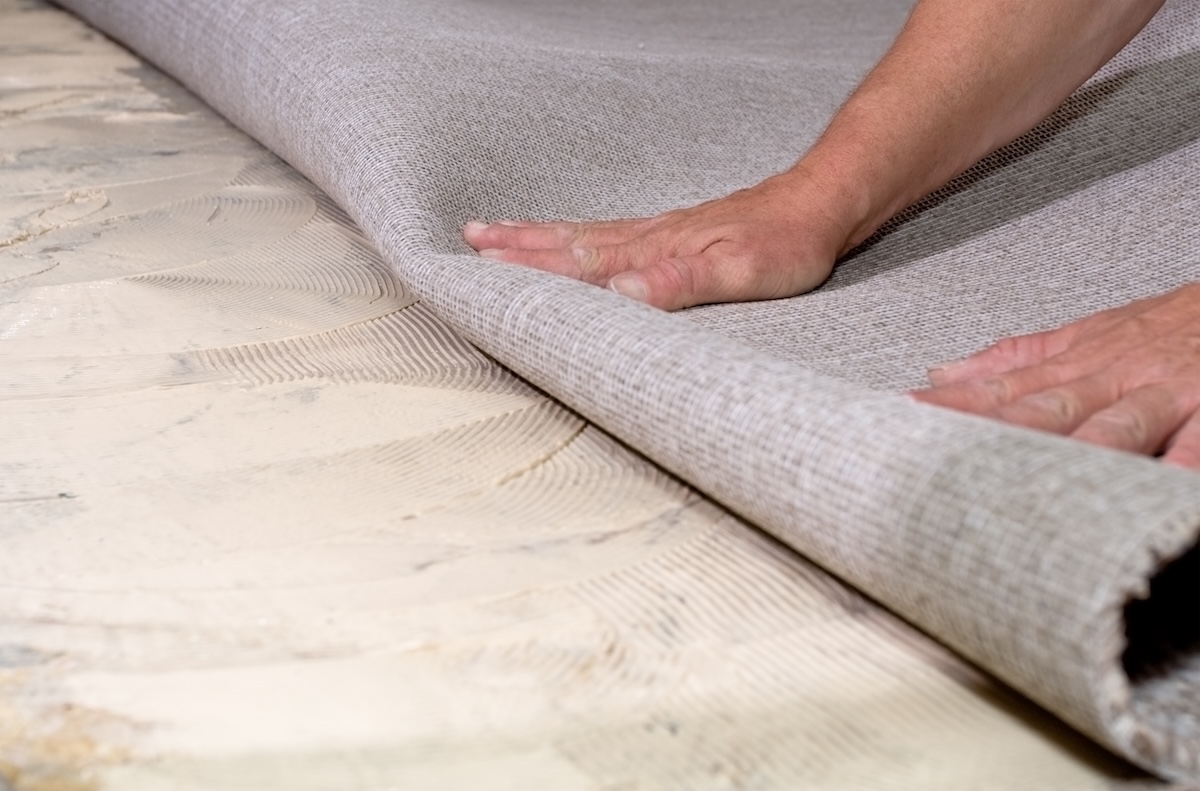

We may earn revenue from the products available on this page and participate in affiliate programs. Learn More ›
Ripping up old carpeting is no small task, but removing the glue used to secure it to the subfloor is a major job all on its own. Creating a clean, smooth surface is critical, however, if a new adhesive is to form a tight bond between the new flooring and the subfloor.
Pricey off-the-shelf products promise to make easy work of removing tough carpet glue from concrete, but chemical strippers emit toxic fumes while their eco-friendly counterparts can be so “green” that they’re ineffective. In the end, the manual method for removing carpet glue may be your best bet.
Before moving forward take note: Carpet adhesives manufactured in the 1980s or earlier may contain asbestos, a known carcinogen. If you suspect the adhesive on your floor could contain asbestos, do not attempt to remove it yourself; contact an asbestos abatement professional.
Tools & Materials
Bobvila.com may earn a commission from purchases made through these links.
How to Remove Carpet Glue
Step 1: Scrape away as much glue as possible.
Your first measure is to manually remove as much glue as you can with a scraping tool. While this may not banish every last bit of carpet glue from the floor, getting rid of as many large pieces as possible is a good starting point before moving on to other techniques for how to remove carpet glue. Use a paint scraper, spackling knife, 5-in-1 tool, or a razor blade—just be sure the tool has a handle with a comfortable grip. Wear flexible work gloves to spare your hands; knee pads are also advisable during what could otherwise be a painful chore.
Step 2: Soften remaining carpet glue with heat.
If you can’t conquer all the carpet glue with elbow grease alone, move on to heat, which will soften the dried adhesive, making it easier to scrape or scour away. There are two ways to approach this: with either boiling water or steam. After donning protective gloves (and waterproof work boots, or possibly rain boots, to protect your feet), heat and pour enough boiling water to completely cover the carpet glue and give it about 5 to 10 minutes to soften.

Tried-and-True Advice
“After softening the glue with steam, I found it helped to scrape in small, circular motions instead of straight lines. This method allowed me to break up the glue into smaller sections and get a cleaner removal. It’s also less tiring on your wrist than long, dragging motions.”
—Paul Rankin, Contributing Writer and Editor
Step 3: Scrape away the remaining glue.
When the glue starts to become pliable, use your scraper tool to work it out of the concrete. Work in small sections so that you can remove the softened carpet glue before the water cools. Sop up as much water as possible with a towel when finished to expedite drying.
Other Ways to Remove Carpet Glue
If the manual method fails to yield results, don’t despair. There are at least two additional tools that often prove effective for the task at hand.
- Consider using a portable steam cleaner to direct the flow of steam a few inches away from the carpet glue until it is soft enough to scrape up. Here, too, alternate steaming and scraping small sections at a time so that you can lift up the carpet glue before it cools off and hardens once more.
- If dealing with a large area and/or particularly stubborn carpet glue, use your reciprocating saw fitted with a special scraper attachment to tackle the job. The reciprocating saw will drastically reduce the time spent scraping—the vibration of the blade does the tough work for you. Reciprocating saw scraper blades are available online and at most home improvement centers, from manufacturers such as Spyder and Milwaukee. A 2-inch to 4-inch-wide blade should be appropriate for removing carpet glue. To use the scraper attachment, insert the blade into your reciprocating saw and lock it in place. If the scraper attachment has a beveled edge and a flat edge, position the blade so that the beveled edge faces the ceiling and flat edge faces the floor. Hold the saw at a low angle and start running it at half speed before building up to full speed. The carpet glue should lift right up.
